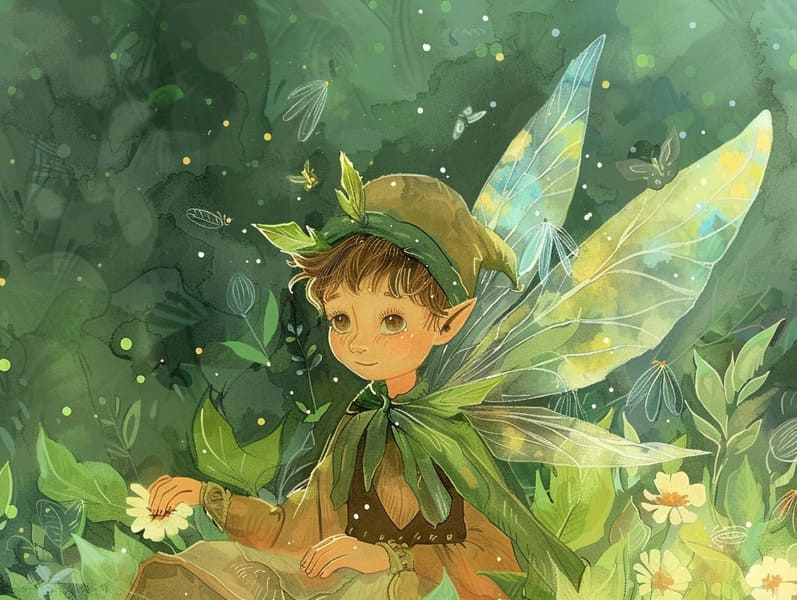The Inception of Fairy Tales for Kids with the Enduring Enchantment.
The Inception of Fairy Tales for Kids with the Enduring Enchantment.
Blog Article

Fairy tales for kids have ancient roots. These narratives have been told from one generation to the next far before they were ever inscribed. They originated from a variety of civilizations, including Western traditions. They were initially shared among grown-ups, often carrying themes and messages concerning the societal norms and beliefs of the time.
The renowned Brothers Grimm, Jacob and Wilhelm Grimm, were among the first to assemble many of these beloved narratives. Their published works, "Grimm's Fairy Stories," included tales like "Cinderella," "The Bread Crumb Trail," and "Little Snow White," which have since become hallmarks in the world of famous fairy tales. Similarly, Hans Christian Andersen's charming narratives, such as "The Mermaid," and "The Ugly Duckling," have gained the love worldwide, guaranteeing their place in the pantheon of classic fairy tales.
Though they are old, these tales remain as significant as ever, especially as kids' bedtime tales. These enchanting tales are now available in multiple formats, including gorgeously illustrated books, delightful animations, and digital fairy tales.
Their lasting presence can be traced to several magical reasons:
Key Lessons: Traditional fairy tales often provide important moral lessons. Stories like "The Boy Who Cried Wolf" teach the benefit of truthfulness, while "The Tale of the Tortoise and the Hare" show the benefits of determination and humbleness. These narratives offer young readers clear distinctions between right and wrong, developing their moral compass in a tender yet lasting way.
Empathy and Awareness: Traditional fairy tales frequently depict figures facing struggles and tests, urging kids to identify with their struggles and champion their triumphs. For instance, "The Story of Beauty and the Beast" reveals the importance of appreciating inner worth to perceive the true essence of a character, fostering awareness and recognition.
Cultural Knowledge: Many old fairy tales are deeply embedded in the cultural contexts from which they came. Immersing in these narratives can provide illuminating insights into different historical contexts, strengthening a sense of cultural awareness and recognition.
Creativity and Imagination: The magical elements in traditional fairy tales—enchanted lands—foster children’s creativity. These stories take readers to fantastical realms, inspiring innovative ideas and a sense of magic that continues a lifetime.
Timeless fairy tales are not only bewitching but also informative. They function as whimsical tools in promoting various mental and emotional abilities in young ones. When fairy tales are told out loud, they enhance language acquisition by showing new linguistic elements and elaborate sentence structures. This practice also fosters hearing perception and concentration, as the young pay close attention, anticipating to see what happens next.
Furthermore, talking about the themes and characters of old fairy tales can enhance problem-solving abilities and thinking skills. Young ones are instructed to see patterns, expect results, and realize cause and effect. These deliberations also contribute to young ones speak out their thoughts and feelings, fostering their emotional intelligence.
In today’s technological age, the prevalence of digital fairy tales has made these tales more accessible than ever. Online resources and web apps extend large libraries of timeless fairy tales that can be read or listened to anytime, anywhere. Fairy tales read out loud are particularly well-liked, supplying an immersive method for children to engage with these bewitching tales. Audio stories and read-out-loud videos guide characters and settings to life, often enhanced by whimsical harmonies and background music that enhance the tale experience.
The timeless appeal of classic fairy tales lies in their ability to modify to present days while staying true to their fundamental ideas. Contemporary renditions of these fairy tales often introduce more diverse figures and modern settings, making them relatable to today’s audience. However, the central morals of spirit, generosity, and lawfulness remain unchanged, continuing to resonate with listeners of all ages.
Fairy tales also offer a sense of ease and knowability. They render accessible a methodical narrative with a recognizable beginning, middle, and end, often wrapping up with the resolution of conflicts and the triumph of rightness over wrongness. This constancy can be reassuring for young ones, proffering a sense of steadiness in an variable world.
Ancient fairy tales continue to fascinate and edify new generations, maintaining their allure and meaningfulness in modern society. As children's night stories, they bring a perfect read more blend of allure and teaching, backing moral values, empathy, and creativity. The existence of digital storybooks and the commonness of fairy tales narrated ensure that these traditional narratives remain reachable to new generations.
By guarding and spreading these narratives, we continue to venerate the rich tapestry of lore and cultural heritage. Whether you are seeing a gorgeously illustrated book, discovering a internet library, or playing an read-aloud book, the splendor of children's fairy tales is always within reach. These stories demonstrate of the perpetual effect of storytelling and its ability to hold us together across centuries and lands.
If you are accessing a colorful picture book, browsing a virtual library, or playing an voice book, the delight of famous fairy tales is always within reach.
These fairy tales point out of the unwavering nature of fairy tales and its ability to bind us across eras and regions, weaving a spell that delights and instructs alike.